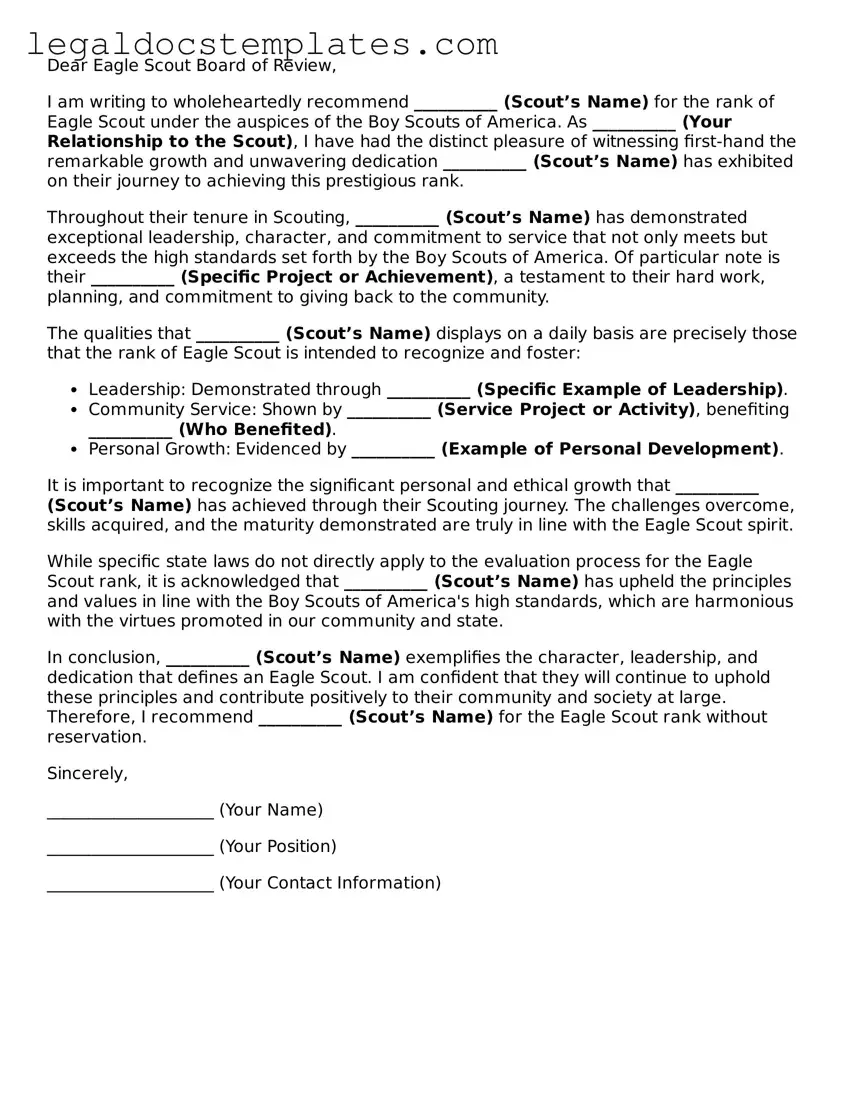Dear Eagle Scout Board of Review,
I am writing to wholeheartedly recommend __________ (Scout’s Name) for the rank of Eagle Scout under the auspices of the Boy Scouts of America. As __________ (Your Relationship to the Scout), I have had the distinct pleasure of witnessing first-hand the remarkable growth and unwavering dedication __________ (Scout’s Name) has exhibited on their journey to achieving this prestigious rank.
Throughout their tenure in Scouting, __________ (Scout’s Name) has demonstrated exceptional leadership, character, and commitment to service that not only meets but exceeds the high standards set forth by the Boy Scouts of America. Of particular note is their __________ (Specific Project or Achievement), a testament to their hard work, planning, and commitment to giving back to the community.
The qualities that __________ (Scout’s Name) displays on a daily basis are precisely those that the rank of Eagle Scout is intended to recognize and foster:
- Leadership: Demonstrated through __________ (Specific Example of Leadership).
- Community Service: Shown by __________ (Service Project or Activity), benefiting __________ (Who Benefited).
- Personal Growth: Evidenced by __________ (Example of Personal Development).
It is important to recognize the significant personal and ethical growth that __________ (Scout’s Name) has achieved through their Scouting journey. The challenges overcome, skills acquired, and the maturity demonstrated are truly in line with the Eagle Scout spirit.
While specific state laws do not directly apply to the evaluation process for the Eagle Scout rank, it is acknowledged that __________ (Scout’s Name) has upheld the principles and values in line with the Boy Scouts of America's high standards, which are harmonious with the virtues promoted in our community and state.
In conclusion, __________ (Scout’s Name) exemplifies the character, leadership, and dedication that defines an Eagle Scout. I am confident that they will continue to uphold these principles and contribute positively to their community and society at large. Therefore, I recommend __________ (Scout’s Name) for the Eagle Scout rank without reservation.
Sincerely,
____________________ (Your Name)
____________________ (Your Position)
____________________ (Your Contact Information)
